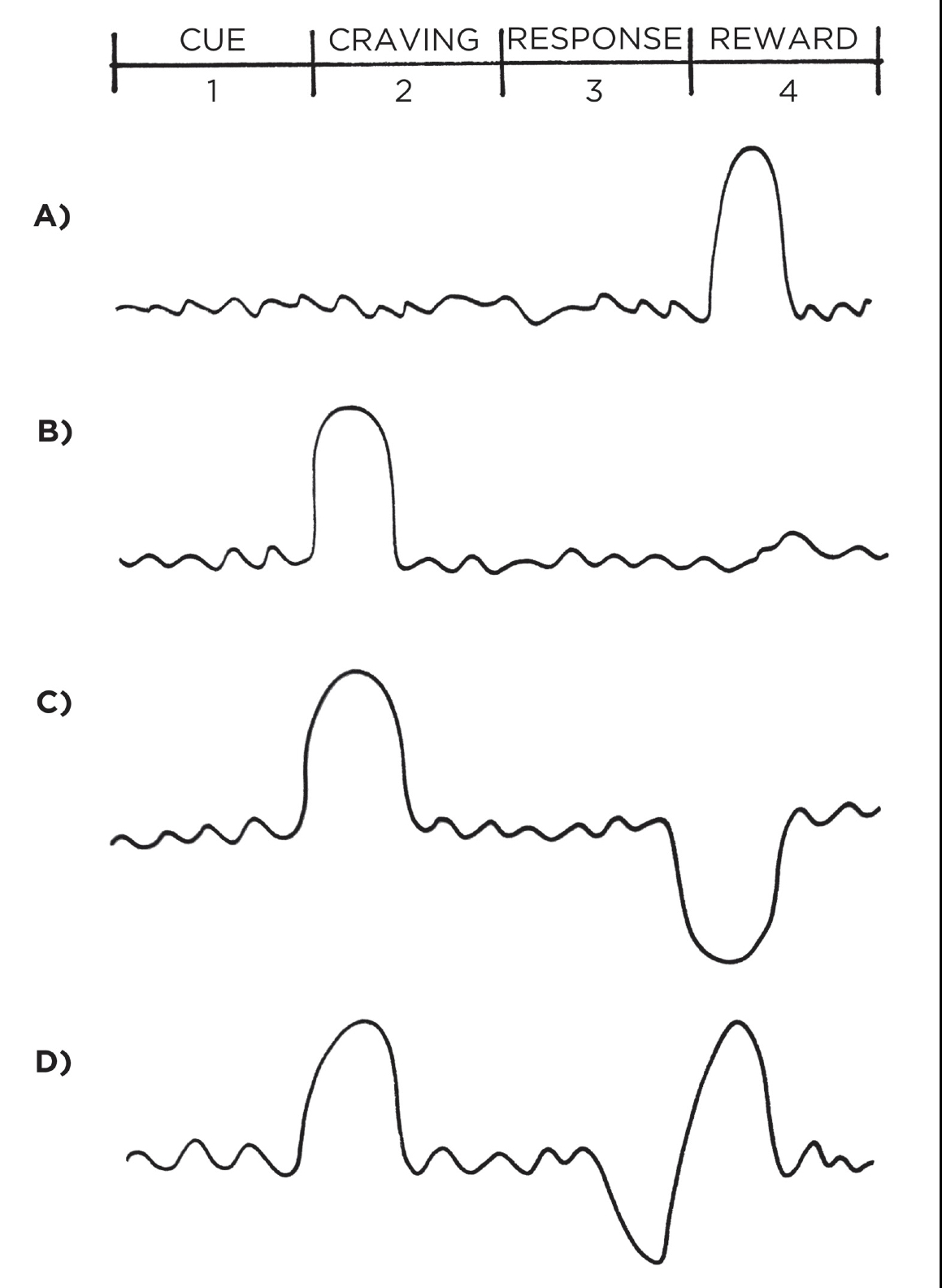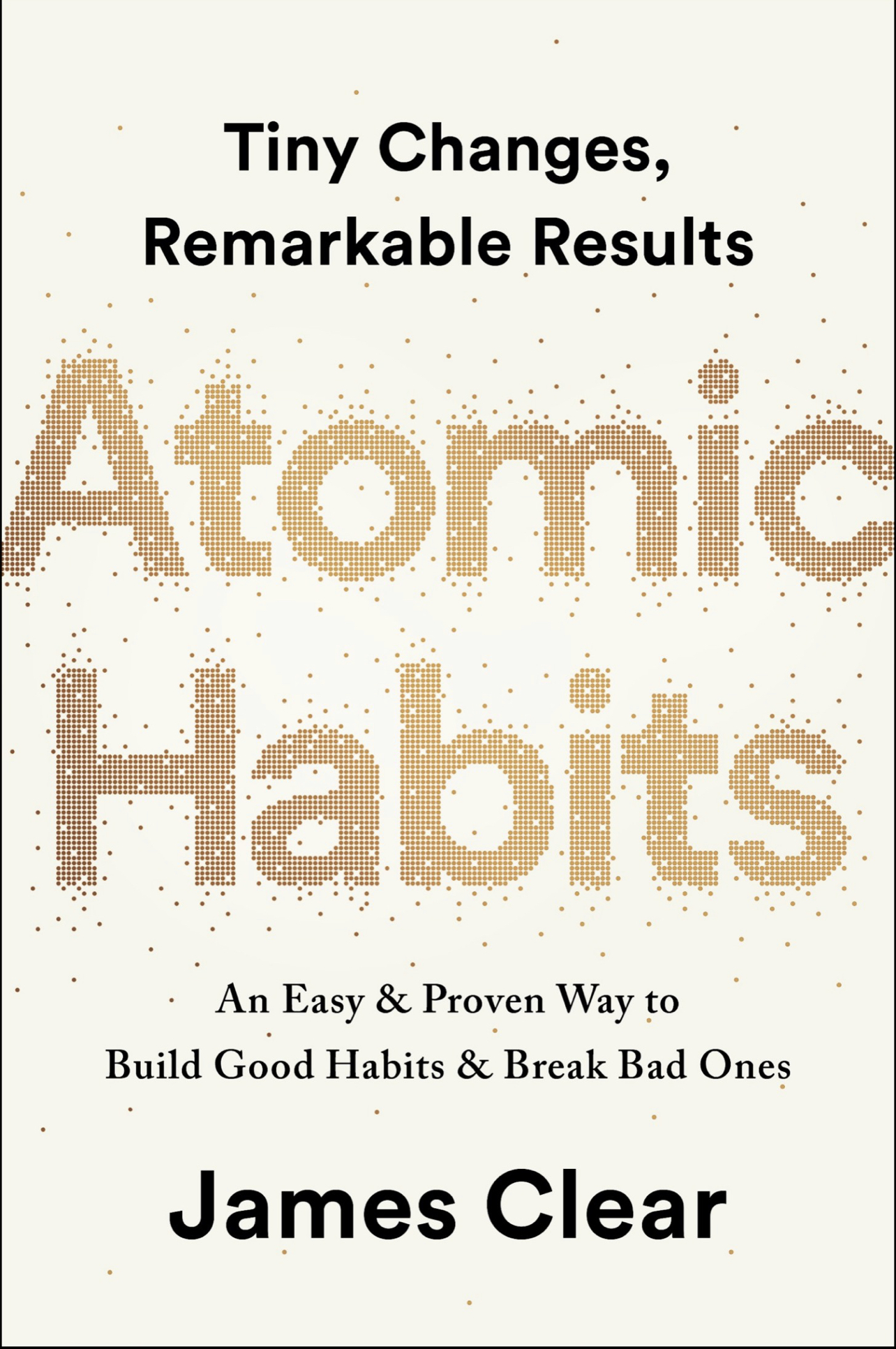← Atomic Habits An Easy & Proven Way to Build Good Habits & Break Bad Ones
Atomic Habits An Easy & Proven Way to Build Good Habits & Break Bad Ones Chapter 8. How to Make a Habit Irresistible
Author: James Clear Publisher: Penguin Random House. New York, NY. Publish Date: 2018 Review Date: Status:📚
Annotations
Highlight(pink) - Location 1340
They had a clear preference for those red spots—as if they had been genetically programmed at birth. It’s like the brain of each animal is preloaded with certain rules for behavior, and when it comes across an exaggerated version of that rule, it lights up like a Christmas tree. Scientists refer to these exaggerated cues as supernormal stimuli. A supernormal stimulus is a heightened version of reality—like a beak with three red dots or an egg the size of a volleyball—and it elicits a stronger response than usual.
Highlight(pink) - Location 1353
Humans are also prone to fall for exaggerated versions of reality. Junk food, for example, drives our reward systems into a frenzy. After spending hundreds of thousands of years hunting and foraging for food in the wild, the human brain has evolved to place a high value on salt, sugar, and fat. Such foods are often calorie-dense and they were quite rare when our ancient ancestors were roaming the savannah. When you don’t know where your next meal is coming from, eating as much as possible is an excellent strategy for survival. Today, however, we live in a calorie-rich environment. Food is abundant, but your brain continues to crave it like it is scarce. Placing a high value on salt, sugar, and fat is no longer advantageous to our health, but the craving persists because the brain’s reward centers have not changed for approximately fifty thousand years. The modern food industry relies on stretching our Paleolithic instincts beyond their evolutionary purpose.
Highlight(pink) - Location 1360
A primary goal of food science is to create products that are more attractive to consumers. Nearly every food in a bag, box, or jar has been enhanced in some way, if only with additional flavoring. Companies spend millions of dollars to discover the most satisfying level of crunch in a potato chip or the perfect amount of fizz in a soda. Entire departments are dedicated to optimizing how a product feels in your mouth—a quality known as orosensation. French fries, for example, are a potent combination—golden brown and crunchy on the outside, light and smooth on the inside. Other processed foods enhance dynamic contrast, which refers to items with a combination of sensations, like crunchy and creamy. Imagine the gooeyness of melted cheese on top of a crispy pizza crust, or the crunch of an Oreo cookie combined with its smooth center. With natural, unprocessed foods, you tend to experience the same sensations over and over—how’s that seventeenth bite of kale taste? After a few minutes, your brain loses interest and you begin to feel full. But foods that are high in dynamic contrast keep the experience novel and interesting, encouraging you to eat more. Ultimately, such strategies enable food scientists to find the “bliss point” for each product—the precise combination of salt, sugar, and fat that excites your brain and keeps you coming back for more. The result, of course, is that you overeat because hyperpalatable foods are more attractive to the human brain. As Stephan Guyenet, a neuroscientist who specializes in eating behavior and obesity, says, “We’ve gotten too good at pushing our own buttons.”
Highlight(pink) - Location 1372
The modern food industry, and the overeating habits it has spawned, is just one example of the 2nd Law of Behavior Change: Make it attractive. The more attractive an opportunity is, the more likely it is to become habit-forming.
Highlight(pink) - Location 1374
Look around. Society is filled with highly engineered versions of reality that are more attractive than the world our ancestors evolved in. Stores feature mannequins with exaggerated hips and breasts to sell clothes. Social media delivers more “likes” and praise in a few minutes than we could ever get in the office or at home. Online porn splices together stimulating scenes at a rate that would be impossible to replicate in real life. Advertisements are created with a combination of ideal lighting, professional makeup, and Photoshopped edits—even the model doesn’t look like the person in the final image. These are the supernormal stimuli of our modern world. They exaggerate features that are naturally attractive to us, and our instincts go wild as a result, driving us into excessive shopping habits, social media habits, porn habits, eating habits, and many others. If history serves as a guide, the opportunities of the future will be more attractive than those of today. The trend is for rewards to become more concentrated and stimuli to become more enticing. Junk food is a more concentrated form of calories than natural foods. Hard liquor is a more concentrated form of alcohol than beer. Video games are a more concentrated form of play than board games. Compared to nature, these pleasure-packed experiences are hard to resist. We have the brains of our ancestors but temptations they never had to face.=
Highlight(pink) - Location 1388
Scientists can track the precise moment a craving occurs by measuring a neurotransmitter called dopamine.* The importance of dopamine became apparent in 1954 when the neuroscientists James Olds and Peter Milner ran an experiment that revealed the neurological processes behind craving and desire. By implanting electrodes in the brains of rats, the researchers blocked the release of dopamine. To the surprise of the scientists, the rats lost all will to live. They wouldn’t eat. They wouldn’t have sex. They didn’t crave anything. Within a few days, the animals died of thirst. In follow-up studies, other scientists also inhibited the dopamine-releasing parts of the brain, but this time, they squirted little droplets of sugar into the mouths of the dopamine-depleted rats. Their little rat faces lit up with pleasurable grins from the tasty substance. Even though dopamine was blocked, they liked the sugar just as much as before; they just didn’t want it anymore. The ability to experience pleasure remained, but without dopamine, desire died. And without desire, action stopped. When other researchers reversed this process and flooded the reward system of the brain with dopamine, animals performed habits at breakneck speed. In one study, mice received a powerful hit of dopamine each time they poked their nose in a box. Within minutes, the mice developed a craving so strong they began poking their nose into the box eight hundred times per hour. (Humans are not so different: the average slot machine player will spin the wheel six hundred times per hour.)
Highlight(pink) - Location 1400
Habits are a dopamine-driven feedback loop. Every behavior that is highly habit-forming—taking drugs, eating junk food, playing video games, browsing social media—is associated with higher levels of dopamine. The same can be said for our most basic habitual behaviors like eating food, drinking water, having sex, and interacting socially. For years, scientists assumed dopamine was all about pleasure, but now we know it plays a central role in many neurological processes, including motivation, learning and memory, punishment and aversion, and voluntary movement.
Highlight(pink) - Location 1404
When it comes to habits, the key takeaway is this: dopamine is released not only when you experience pleasure, but also when you anticipate it. Gambling addicts have a dopamine spike right before they place a bet, not after they win. Cocaine addicts get a surge of dopamine when they see the powder, not after they take it. Whenever you predict that an opportunity will be rewarding, your levels of dopamine spike in anticipation. And whenever dopamine rises, so does your motivation to act. It is the anticipation of a reward—not the fulfillment of it—that gets us to take action. Interestingly, the reward system that is activated in the brain when you receive a reward is the same system that is activated when you anticipate a reward. This is one reason the anticipation of an experience can often feel better than the attainment of it. As a child, thinking about Christmas morning can be better than opening the gifts. As an adult, daydreaming about an upcoming vacation can be more enjoyable than actually being on vacation. Scientists refer to this as the difference between “wanting” and “liking.”
Note - Location 1414

Highlight(pink) - Location 1416
FIGURE 9: Before a habit is learned (A), dopamine is released when the reward is experienced for the first time. The next time around (B), dopamine rises before taking action, immediately after a cue is recognized. This spike leads to a feeling of desire and a craving to take action whenever the cue is spotted. Once a habit is learned, dopamine will not rise when a reward is experienced because you already expect the reward. However, if you see a cue and expect a reward, but do not get one, then dopamine will drop in disappointment (C). The sensitivity of the dopamine response can clearly be seen when a reward is provided late (D). First, the cue is identified and dopamine rises as a craving builds. Next, a response is taken but the reward does not come as quickly as expected and dopamine begins to drop. Finally, when the reward comes a little later than you had hoped, dopamine spikes again. It is as if the brain is saying, “See! I knew I was right. Don’t forget to repeat this action next time.”
Highlight(pink) - Location 1423
Your brain has far more neural circuitry allocated for wanting rewards than for liking them. The wanting centers in the brain are large: the brain stem, the nucleus accumbens, the ventral tegmental area, the dorsal striatum, the amygdala, and portions of the prefrontal cortex. By comparison, the liking centers of the brain are much smaller. They are often referred to as “hedonic hot spots” and are distributed like tiny islands throughout the brain. For instance, researchers have found that 100 percent of the nucleus accumbens is activated during wanting. Meanwhile, only 10 percent of the structure is activated during liking. The fact that the brain allocates so much precious space to the regions responsible for craving and desire provides further evidence of the crucial role these processes play. Desire is the engine that drives behavior. Every action is taken because of the anticipation that precedes it. It is the craving that leads to the response.
Highlight(pink) - Location 1430
These insights reveal the importance of the 2nd Law of Behavior Change. We need to make our habits attractive because it is the expectation of a rewarding experience that motivates us to act in the first place. This is where a strategy known as temptation bundling comes into play. Temptation bundling works by linking an action you want to do with an action you need to do. You’re more likely to find a behavior attractive if you get to do one of your favorite things at the same time. Temptation bundling is one way to apply a psychology theory known as Premack’s Principle. Named after the work of professor David Premack, the principle states that “more probable behaviors will reinforce less probable behaviors.” In other words, even if you don’t really want to process overdue work emails, you’ll become conditioned to do it if it means you get to do something you really want to do along the way. You can even combine temptation bundling with the habit stacking strategy we discussed in Chapter 5 to create a set of rules to guide your behavior.
The habit stacking + temptation bundling formula is: After [CURRENT HABIT], I will [HABIT I NEED]. After [HABIT I NEED], I will [HABIT I WANT].
